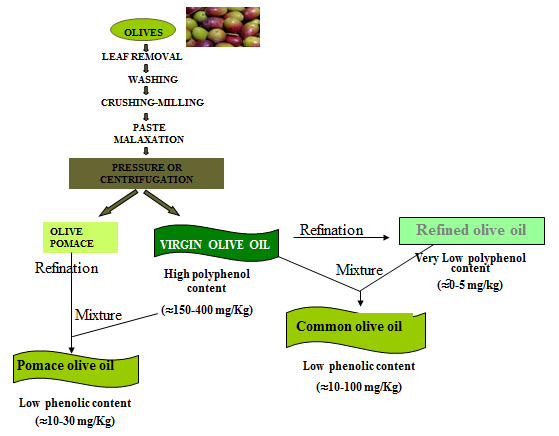Three types of olive oil are currently present on the market: pomace, common (UE, 1991), and virgin olive oil. Virgin olive oil is produced by direct press or centrifugation methods. Virgin olive oils with an acidity greater than 3.3 degrees are submitted to a refination process in which antioxidant polyphenols, one class of the minor components of the olive oil, are lost. By mixing virgin and refined olive oil a common olive oil (olive oil, UE 1991) is marketed. After virgin olive oil production the rest of the olive drupe and seed is processed and submitted to a refination process, and pomace olive oil, to which a certain quantity of virgin olive oil is added, is marketed. Virgin olive oils with an acidity less than 1.0 degrees are called extra-virgin olive oil.
The best studied minor components of olive oil are its phenolic compounds, commonly called “polyphenols” although the olive oil, besides polyphenols contains simple phenols. The content of the polyphenols of an olive oil varies, depending on the variety (Arbequina, Picual, Tsunami, etc) of the olive, type of cultivar, climate, ripeness of the olives at harvesting, and the processing system for the type of olive oil. As a general rule, the polyphenol content of a virgin olive oil is higher than that present in a common or a pomace olive oil.
The Figure shows the procedure with the mean polyphenol concentration of the olive oils present on the market.
